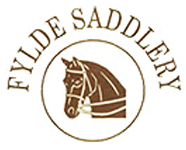Who Invented the Wilkie Snaffle?
The late Peter Wilkinson founder of Fylde Saddlery designed the Wilkie Snaffle, his favorite classes were the Lead Rein and First Ridden Ponies, He was asked by many parents why the ponies were not happy and some even bolting with the small jockeys. He studied many children riding and noticed when the young or inexperienced riders were performing the rising trot so were their hands which in turn caused a normal snaffle bit to create the nutcracker effect in the pony mouth, causing it to lean or pull on the child’s hands snatch the reins or put its head up in a high nodding action or the worst case bolt. He needed a bit that would remove the unnatural hand movement that acted straight on the mouth causing the pony discomfort. Eventually, he realised if he took a loose ring snaffle which is more forgiving than an eggbutt snaffle, and fixed the cheekpiece to the top of the bit and fixed the rein to the bottom but allowed the rest of the loose ring to still rotate, this action acted on the poll first and when the bit had rotated so far then the mouthpiece kicked in just like a normal snaffle. So the excessive hand movement put light pressure on the poll and encouraged the pony to drop its head and create an outline shape that looked far more attractive than a pokey nose. With this bit, adults can ride off the leg and poll without touching the mouth which fussy mouth equines seem to prefer as it can be much milder than most bits available on the market.
What is a Wilkie Snaffle Bit, and How Does It Work?
The Wilkie snaffle bit, a popular type of horse bit, is revered for its versatility and effectiveness in communicating with horses. Its unique design distinguishes it from other snaffle bit types commonly used in horse bridles. With its various mouthpieces, the Wilkie snaffle bit provides precise control and encourages gentle, responsive movements from the horse. This bit works by exerting mild pressure on the poll, promoting an outline. Whether you’re an experienced equestrian or a novice rider, the Wilkie snaffle bit can be a valuable tool for achieving harmonious communication with your equine partner.
The Different Types of Wilkie Snaffle Bits
By understanding these Wilkie snaffle bits’ unique features and functions, riders can choose the most suitable option for their equine partners, ensuring a comfortable and effective riding experience. The Large Wilkie with the Anti-nip sides was originally designed as a training aid to help unnecessary jagging of the mouth bring the horse into an outline, and the Wilkie Show without the anti-nip side and the smaller ring was introduced for a neater look in the show ring.
Which Kind of Horse Needs a Wilkie Snaffle Bit?
Are you wondering which type of horse requires a Wilkie snaffle bit? Wilkie bits are particularly beneficial for various equine needs. Young horses, with their sensitive mouths, find comfort in the mild design and gentle pressure distribution of Wilkie snaffles. These bits offer excellent communication and aid in establishing a solid foundation for training. Moreover, even draft horses can benefit from Wilkie bits due to their adaptability and effectiveness. Whether you have a young horse or a draft horse, consider the versatility and suitability of Wilkie snaffle bits to ensure a comfortable and successful riding experience for your equine companion.
Choosing the Right Size and Design of a Wilkie Snaffle Bit for Your Horse
When choosing a Wilkie snaffle bit for your beloved equine companion, finding the right size and design is crucial for their comfort and performance. The size of Wilkies for horses should be carefully considered to ensure a correct fit, allowing for effective communication between horse and rider. The bit should be placed in the mouth and pulled up to one side, on the other side you should be able to fit one finger width between the edge of the mouthpiece and the lip to get the correct size for the horse. Additionally, exploring the various design features of Wilkies can enhance the overall riding experience. From considering the horse’s mouth size to evaluating the conformation of the mouth eg low pallet, thick tongue, etc, by understanding these factors will help you make an informed decision and ensure a happy and harmonious partnership with your horse. Remember, a well-fitted Wilkie snaffle bit can make all the difference in your equestrian endeavors.
How to Use a Wilkie Snaffle Bit Correctly
Are you a horse enthusiast looking to improve your riding skills? Understanding how to adjust a Wilkie snaffle bit correctly is key to achieving effective communication with your equine companion. Start by ensuring the bit rests comfortably in the horse’s mouth, allowing for a one-finger gap. Adjust the cheekpieces to avoid excessive pressure or looseness, providing a balanced contact. Remember, each horse is unique, so experiment with different settings to find the optimal fit. By mastering this essential skill, you’ll enhance your riding experience and foster a harmonious partnership with your equine friend.
Conclusion
Understanding Wilkie snaffle bits is essential when it comes to equestrian equipment. By grasping their unique design and functionality, riders can make informed decisions to enhance their horse’s comfort and control. Whether you’re a novice or an experienced rider, selecting the right Wilkie snaffle bit is crucial for optimal performance. Factors such as material, size, and mouthpiece type must be considered. By investing time in researching and experimenting, riders can find the perfect fit for their horse, ensuring a harmonious partnership and improved riding experience. Remember, a well-chosen Wilkie snaffle bit is a valuable tool for achieving success in the saddle.

